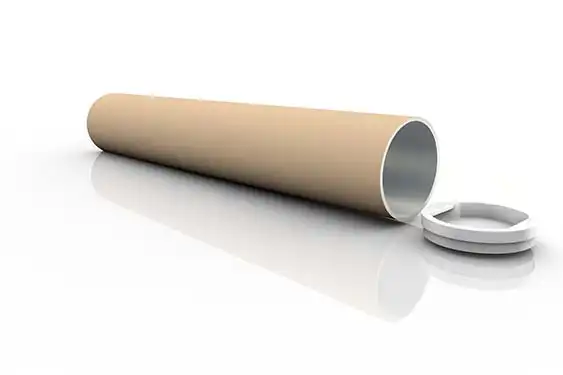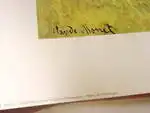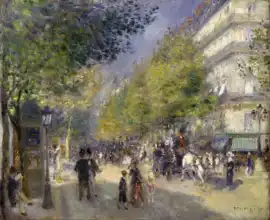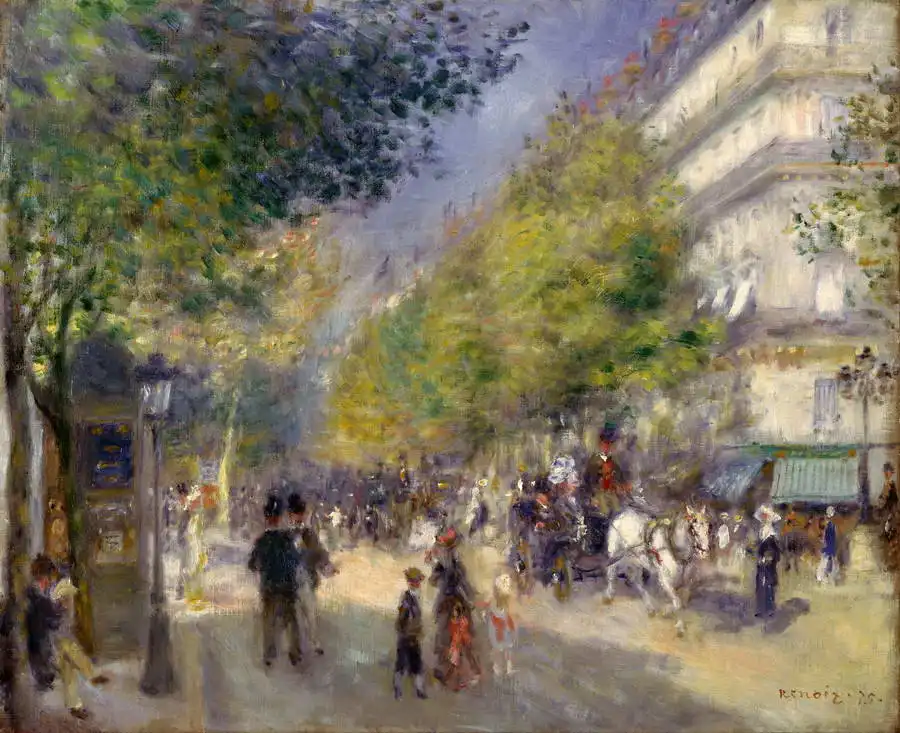About this finishing
Print. The image is printed on the top quality 10-ink HP Z9PS printer on HP matte 270 g / m2 paper. You can choose any size to an accuracy of 1 cm. A margin of 5 cm around the image is added to the size of the motif.


You can find a detailed description about our finishings
here.
On the boulevard
Date:
1875Medium:
oil on canvasLocation:
Philadelphia Museum of ArtDimensions:
63,5 x 52,1Perhaps
Renoir's most famous view of Paris is this classic depiction of its most modern and newest part in the 1870s. The picture On the boulevard is full of color spots and bright colors that are so typical of Impressionism. Modern life in the city is presented through visible brushstrokes, allowing the viewer to perceive this world as if they were passing by. This is the legendary magic of Renoir's Paris. The modern but steeped in history captivates the city, even though it is presented very subjectively and with the help of a fleeting impression.
Renoir painted picture On the boulevard in 1875. Prevailing color of this fine art print is green and its shape is landscape. Original size is 63,5 x 52,1. This art piece is located in Philadelphia Museum of Art. This image is printed on demand - you can choose material, size and finishing.
Pierre Auguste Renoir (1841-1919). One of the greatest French
Impressionists. He painted modestly, humbly studying the works of other painters. His paintings are spontaneous and full of loose, fine brush strokes. Courbet inspired him to depict everyday scenes of ordinary people and Corot influenced Renoir by his love of nature and the use of subtle tones. However, Renoir was most influenced by
Manet, who is known for his colourfulness, small spatial depth and broad brushstrokes.
Renoir’s images are direct, capturing the optimistic atmosphere of Parisian streets and cafes. His nudes are known for their purity, fineness, and the play of light on the human body. Among his best-known works are
The Swing (capturing a beloved courting scene, a festive moment, full of colour and light),
Moulin de la Galette (a symbol of Impressionism showing an open-air summer dance festival),
Luncheon of the Boating Party (an idealized portrait of Renoir’s friends, including his future wife). The image shows the abandon of the upper classes and their leisure time. Among his prized paintings is a series of three paintings
Dance in the Country, Dance in Bougival and
Dance in the City (in which he masterfully painted movement and the atmosphere of dance).


